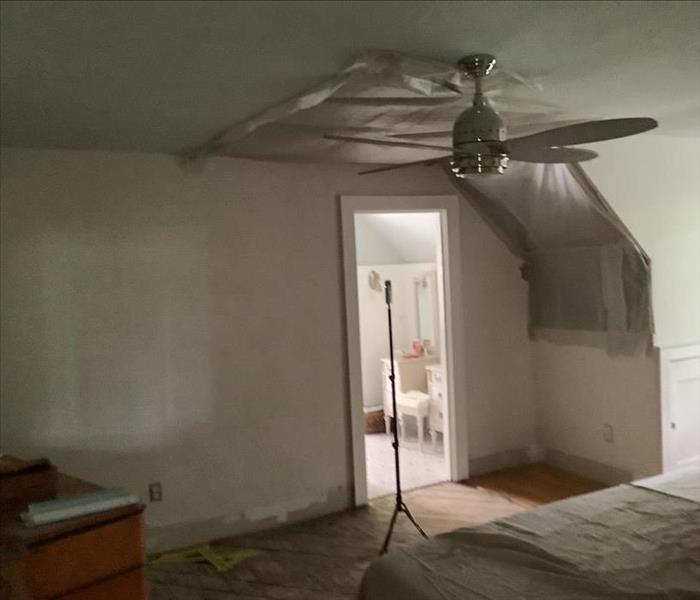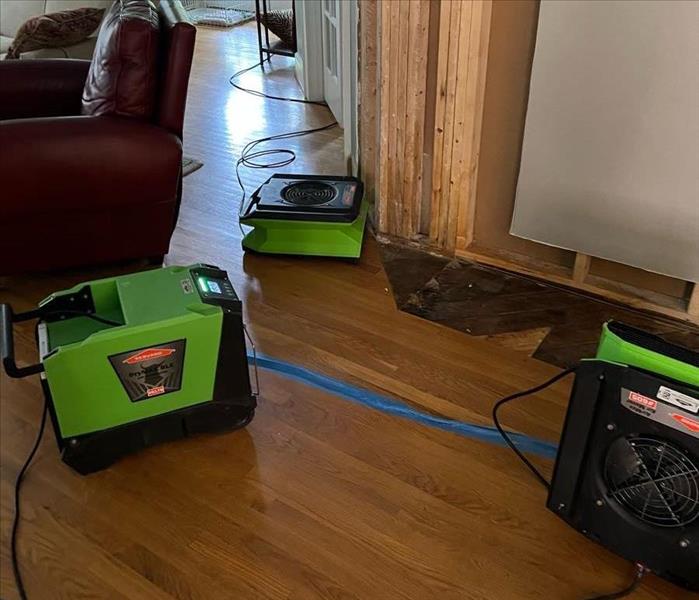Recent Storm Damage Posts
How to Safely Use Candles and Alternative Lighting During Power Outages
5/15/2024 (Permalink)
 In this blog post, we will explore how to safely use candles and other types of lighting during power outages after storm damage.
In this blog post, we will explore how to safely use candles and other types of lighting during power outages after storm damage.
Power outages can occur during storm emergencies, leaving you without electricity and relying on alternative lighting sources. Candles and other forms of lighting can provide illumination and comfort during these dark times. However, it is crucial to prioritize safety when using candles and alternative lighting to prevent accidents and minimize the risk of fire or injury. In this blog post, we will explore how to safely use candles and other types of lighting during power outages after storm damage.
1. Use Candles Safely
When using candles, keep them in sturdy candleholders and place them on a stable surface away from flammable materials, such as curtains or furniture. Never leave a lit candle unattended, and keep them out of reach of children and pets. Consider using flameless LED candles as a safer alternative, as they provide a similar effect without the fire hazard.
2. Avoid Open Flames
Open flames can pose a significant fire risk, especially during power outages when the risk of accidentally knocking over a candle or lighting material is higher. Consider using battery-powered lanterns or flashlights instead of candles. They provide reliable and safe lighting without the risk of open flames.
3. Have Adequate Lighting Supplies
Ensure you have enough alternative lighting supplies on hand, such as battery-powered lanterns, flashlights, and extra batteries. These supplies should be easily accessible and spread throughout your home, so you can quickly find them during a power outage.
4. Test Your Lighting Equipment
Regularly check and test your alternative lighting equipment to ensure they are in proper working condition. Replace batteries as needed and keep a stock of spare batteries for emergencies. Having functional lighting equipment is essential during power outages for safety and peace of mind.
5. Create Well-Lit Pathways
During a power outage, it is important to create well-lit pathways to help prevent trips and falls in the dark. Use battery-powered motion-sensor lights or glow sticks to mark pathways to essential areas of your home, such as the bathroom, kitchen, and emergency exits.
6. Be Mindful of Carbon Monoxide (CO) Risks
If you are using fuel-based lighting sources, such as gas lamps or camp stoves, be aware of the carbon monoxide (CO) risks. Never use these sources indoors, as they produce CO gas, which is odorless and can be deadly. Always use fuel-based lighting sources outside in a well-ventilated area.
7. Follow Manufacturer's Instructions
Regardless of the lighting source you choose, it is important to follow the manufacturer's instructions for safe use. This includes the proper installation and maintenance of equipment to ensure it operates safely and efficiently.
8. Develop a Storm Damage Plan
Preparing for power outages and storm emergencies should be part of your overall storm damage plan. This includes having alternative lighting supplies readily available and knowing the location of emergency exits and safety equipment in your home. It is also recommended to have the contact information of professionals like SERVPRO® who can provide assistance in case of storm damage.
9. Stay Informed
Stay informed about updates and announcements regarding power outages in your area during storm emergencies. Listen to battery-powered radios or use a mobile device with an available charge to receive important updates from local authorities.
In conclusion, using candles and alternative lighting sources safely during power outages is vital to protect your home and ensure your well-being. By following these guidelines and incorporating them into your storm damage plan, you can minimize the risk of accidents or injuries while navigating the dark. Remember, SERVPRO professionals are available to help with storm damage emergencies, including fire and water damage restoration. Stay safe, stay prepared, and stay informed during power outages caused by storm damage.
How to Navigate The Aftermath of Storm Damage
1/2/2024 (Permalink)
 In this blog, we'll explore crucial steps to manage storm damage and immediate actions to take following a weather event.
In this blog, we'll explore crucial steps to manage storm damage and immediate actions to take following a weather event.
When severe weather strikes North Carolina, homes are vulnerable to various forms of damage—wind damage, flooding, and roof leaks among them. As specialists in storm damage restoration, SERVPRO® recognizes the challenges homeowners face post-storm. In this blog, we'll explore crucial steps to manage storm damage and immediate actions to take following a weather event.
Understanding Common Types of Storm Damage
Severe weather can lead to:
Wind Damage: High winds can cause structural harm, broken windows, and roof issues that may result in water entering the home.
Flooding: Heavy rainfall or storm surges can induce flooding, impacting basements, crawl spaces, and interior spaces.
Roof Leaks: Damaged or missing shingles can cause leaks, permitting water to infiltrate the home and cause additional damage.
Immediate Actions After a Storm
- Check for hazards like downed power lines, unstable structures, or gas leaks. Avoid standing water, which may hide potential dangers.
- Thoroughly inspect your property for visible damage and document it through photos or videos to support insurance claims.
- Report storm damage to your insurance provider to initiate the claims process as quickly as possible. Remember to keep records of all communications and claim details.
The Importance of Professional Restoration Services
Seek professional restoration services like SERVPRO of Harnett County West immediately after the storm. Our rapid response can prevent further damage and kick-start restoration promptly. Our trained professionals conduct thorough assessments, providing detailed documentation to support insurance claims and guide restoration. SERVPRO® utilizes advanced equipment for water extraction, drying, and structural repairs, ensuring a comprehensive restoration process.
Handling storm damage can be challenging, but timely and informed actions are crucial. Prioritize safety, document damage, contact insurers promptly, and engage professional restoration services like SERVPRO of Harnett County West to navigate the aftermath of storms effectively. Contact us today for prompt and reliable service!
The Aftermath of Storm Surge and Flood Damage: Steps for Recovery
9/25/2023 (Permalink)
Storm surge and flooding can have devastating effects on homes and communities. The aftermath of such events can be overwhelming, but with the right approach and guidance, you can begin the process of recovery and restoration. In this blog post, we will explore the steps to take in the aftermath of storm surge and flood damage to help you navigate the recovery process effectively.
Ensure Safety First
The safety of yourself and your family is of utmost importance. Before entering your property, ensure that it is safe to do so. Check for any structural damage, electrical hazards, or compromised utilities like gas lines. If there are safety concerns, contact local authorities or professionals to assess the situation before entering.
Document the Damage
Documenting the extent of the damage is essential for insurance claims and the recovery process. Take photographs or videos of the affected areas, making sure to capture any damaged structures, belongings, or valuables. Keep a detailed inventory of all damaged items, including their approximate value and purchase date if possible. This documentation will be valuable when negotiating with insurance companies or applying for assistance.
Contact your insurance company as soon as possible to report the damage and start the claims process. Provide them with the necessary documentation and any additional information they may require. Keep track of all communication with your insurance provider, including dates, names, and any relevant claim numbers. Be patient, as the claims process may take time, especially during times of widespread destruction.
Begin Cleanup and Restoration
Once you've ensured your safety and documented the damage, it's time to begin the cleanup and restoration process. It is highly recommended to hire professional restoration services experienced in flood damage cleanup. They have the expertise, equipment, and knowledge to handle the necessary tasks safely and efficiently.
Remove any standing water from your property using pumps, wet vacuums, or other appropriate equipment. Thoroughly dry out affected areas to prevent further damage and mold damage. Dispose of damaged, contaminated, or unsalvageable items properly, following local regulations.
Mitigate Further Damage
During the reconstruction and restoration phase, it's important to take steps to mitigate any further damage. This may involve implementing measures such as covering damaged areas, boarding up broken windows, or temporarily sealing any openings to protect against rain, wind, or potential intruders.
Recovering from storm surge and flood damage can be a complex process. Consider seeking professional assistance from contractors, flood damage specialists, or disaster relief organizations. They can provide expert guidance, help with the restoration process, and advise on potential hazards or future preventive measures.
Plan for Future Resilience
After experiencing storm surge and flood damage, it's essential to plan for future resilience. Consult with professionals, such as architects or engineers, to assess your property's vulnerability and explore preventive measures. Consider elevating utilities and structures, installing flood barriers or seals, or landscaping with flood-resistant plants. Understand local zoning regulations and building codes to ensure any future improvements adhere to the appropriate guidelines. Recovering from storm surge and flood damage can be a challenging and emotionally draining process. Remember to be patient, as recovery takes time, but with perseverance, you can rebuild and restore your home.
 In this blog post, we will explore how to safely use candles and other types of lighting during power outages after storm damage.
In this blog post, we will explore how to safely use candles and other types of lighting during power outages after storm damage.

 24/7 Emergency Service
24/7 Emergency Service
